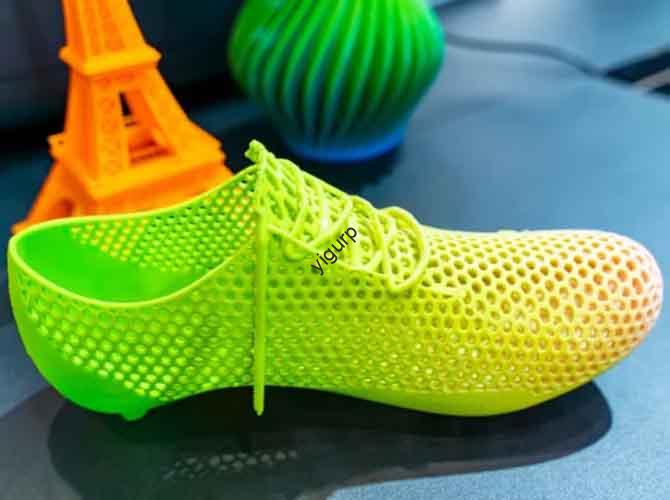Em 3D impressão, choosing the right material can make or break a part’s performance. For applications needing strength, durabilidade, e versatilidade, 3D Printing PA6 (Poliamida 6) se destaca. This material solves common pain points—like fragile parts, poor wear resistance, or limited use in harsh environments—that plague other 3D printing plastics. Let’s explore its key features, Usos do mundo real, and how to overcome its few challenges.
1. Core Advantages of 3D Printing PA6: Why It Outperforms Other Plastics
3D Printing PA6 shines thanks to a unique mix of mechanical and chemical properties. Unlike basic plastics like PLA or ABS, it meets the demands of industrial applications.
Key Properties of 3D Printing PA6
| Propriedade | Detalhes | Benefit for Users |
| Força mecânica | Alta resistência à tração (60 MPA) + rigidez; boa resistência (no breakage under 10 J impact) | Lida com cargas pesadas (Por exemplo, Suportes automotivos) |
| Resistência ao desgaste | Baixo coeficiente de atrito (0.3), 50% better than ABS | Ideal para peças móveis (rolamentos, engrenagens) |
| Estabilidade dimensional | Taxa de encolhimento <1.5% after printing; maintains accuracy within ±0.1mm | Meets precision needs (Por exemplo, peças de máquinas) |
| Resistência ao óleo | Resists mineral oils, lubricants, and hydraulic fluids | Safe for engine or industrial equipment |
| Estabilidade química | Withstands weak acids, Alkalis, and salts (Por exemplo, 5% HCl for 72 horas) | Works in harsh chemical environments |
| Estabilidade térmica | Ponto de fusão (220° c) + Temperatura de deflexão do calor (120° c) | Retains shape in high-heat settings (Por exemplo, Baias do motor) |
Comparação Rápida: 3D Printing PA6 vs. Abs
| Recurso | 3D Printing PA6 | 3D Printing ABS |
| Resistência à tracção | 60 MPA | 40 MPA |
| Resistência ao desgaste | Baixo atrito (0.3) | Higher friction (0.45) |
| Resistência ao óleo | Excelente | Pobre (swells in oil) |
2. 3D Printing Processes for PA6: What Works Best?
3D Printing PA6 is compatible with multiple processes, but some are better suited for its properties. The right choice depends on your part’s needs—like speed, precisão, ou custo.
Common 3D Printing Processes for PA6
| Processo | Como funciona | Melhor para |
| Modelagem de deposição fundida (Fdm) | Melts PA6 filament and extrudes it layer by layer | Protótipos de baixo custo, simple industrial parts (Por exemplo, Suportes) |
| Sinterização seletiva a laser (SLS) | Uses a laser to sinter PA6 powder into solid parts | Geometrias complexas (Por exemplo, hollow gears), peças de alta precisão |
Para a ponta: Enhancing PA6 with Fillers
Para aumentar o desempenho, mix 3D Printing PA6 with fillers:
- Fibra de vidro: Adiciona 30% more strength (ideal para peças estruturais).
- Fibra de carbono: Improves rigidity + reduces weight (great for aerospace components).
- Mineral Fillers: Lowers cost while maintaining basic strength (para peças não críticas).
3. Aplicações do mundo real: Where 3D Printing PA6 Shines
From cars to factories, 3D Printing PA6 solves industry-specific problems. Let’s look at key use cases.
Industry Applications of 3D Printing PA6
| Indústria | Common Parts Made with 3D Printing PA6 | Problem It Solves |
| Automotivo | Suportes de motor, Altas de equipamento, sensor holders | Withstands oil + altas temperaturas; replaces heavy metal parts (Corta o peso do veículo por 15%) |
| Máquinas | Rolamentos, rolos transportadores, Componentes da válvula | Resiste ao desgaste + atrito; lasts 2x longer than ABS parts |
| Eletrônica | Cable organizers, heat-resistant casings | Protects components from heat + produtos químicos |
Estudo de caso: Automotive Gear Replacement
A car manufacturer needed a replacement gear for an older model. Traditional manufacturing would take 4 semanas (mofo + produção). Usando 3D Printing PA6 (FDM with glass fiber), eles:
- Designed the gear in 2 dias.
- Impresso 10 protótipos em 12 horas.
- Testado + finalized the part in 3 dias.
Tempo total: 1 week—75% faster than traditional methods. The gear also lasted 3x longer than the original plastic version.
4. Overcoming PA6’s Challenge: Absorção de água
3D Printing PA6 has one main downside: it absorbs water, which can ruin parts (causes bubbles, deformação, or weakening). But this is easy to fix with proper preparation.
Passo a passo: Drying PA6 Before Printing
- Check Moisture Level: Use a moisture meter—PA6 should have <0.1% umidade.
- Dry the Material:
- For filament: Use a filament dryer at 80°C for 4–6 hours.
- For powder (SLS): Dry at 60°C for 8–10 hours.
- Armazene adequadamente: Keep dried PA6 in an airtight container with desiccant to prevent reabsorption.
What Happens If You Skip Drying?
- Bubbles in the printed part (ruins surface finish).
- 20–30% loss in mechanical strength.
- Deformação (parts don’t fit together).
Perspectiva da tecnologia YIGU
Na tecnologia Yigu, nós vemos 3D Printing PA6 as a bridge between prototyping and industrial production. Our team has tested it in 50+ client projects—from automotive brackets to machinery parts—and found it cuts production time by 60% vs.. Métodos tradicionais. We now offer custom 3D Printing PA6 soluções (with fillers like carbon fiber) and pre-dried materials to avoid moisture issues. Olhando para frente, we’ll integrate AI to optimize PA6 printing parameters, making it even easier for businesses to adopt.
Perguntas frequentes
- P: How long do 3D printed PA6 parts last?
UM: In industrial use (Por exemplo, peças de máquinas), they last 2–5 years—2x longer than ABS parts. With fillers like carbon fiber, lifespan can extend to 7+ anos.
- P: Is 3D Printing PA6 more expensive than other plastics?
UM: Yes—PA6 filament costs ~\(50/kg (vs.. \)20/kg for ABS). Mas economiza dinheiro a longo prazo: parts last longer, so you replace them less often.
- P: Can 3D printed PA6 parts be recycled?
UM: Sim! Scrap PA6 (suportes, impressões falhadas) can be melted down and turned into new filament/powder. This reduces waste by 40% vs.. single-use plastics.
